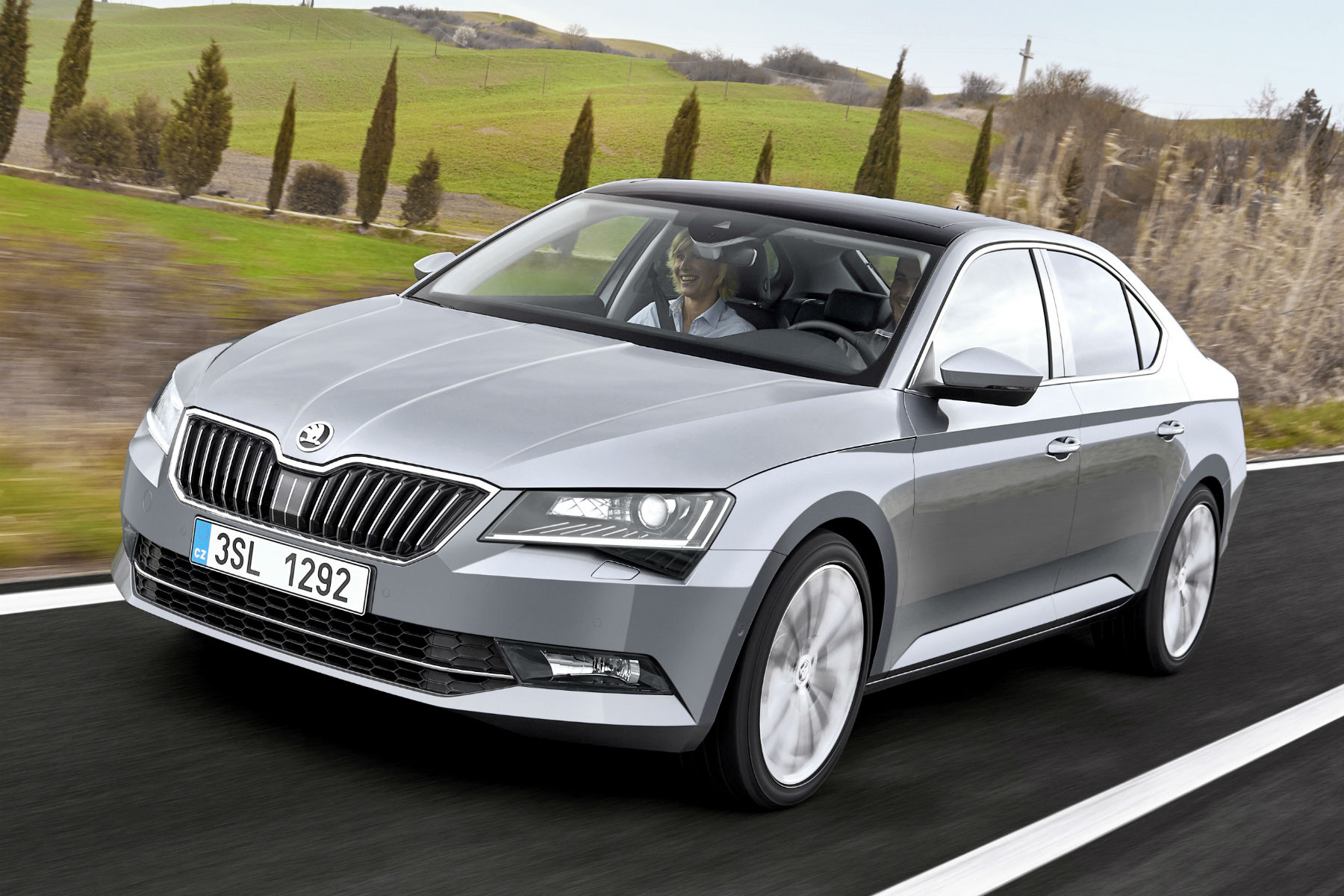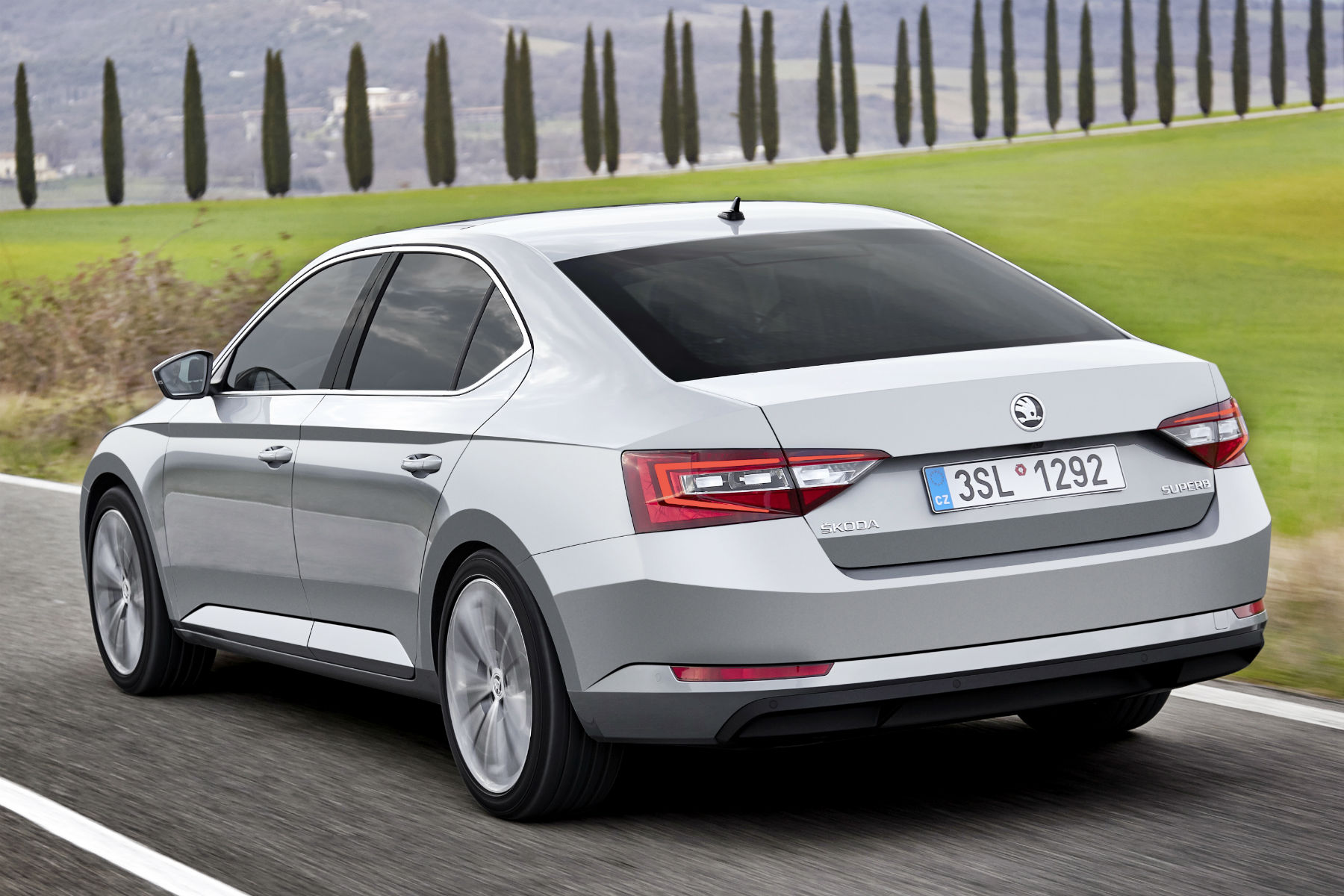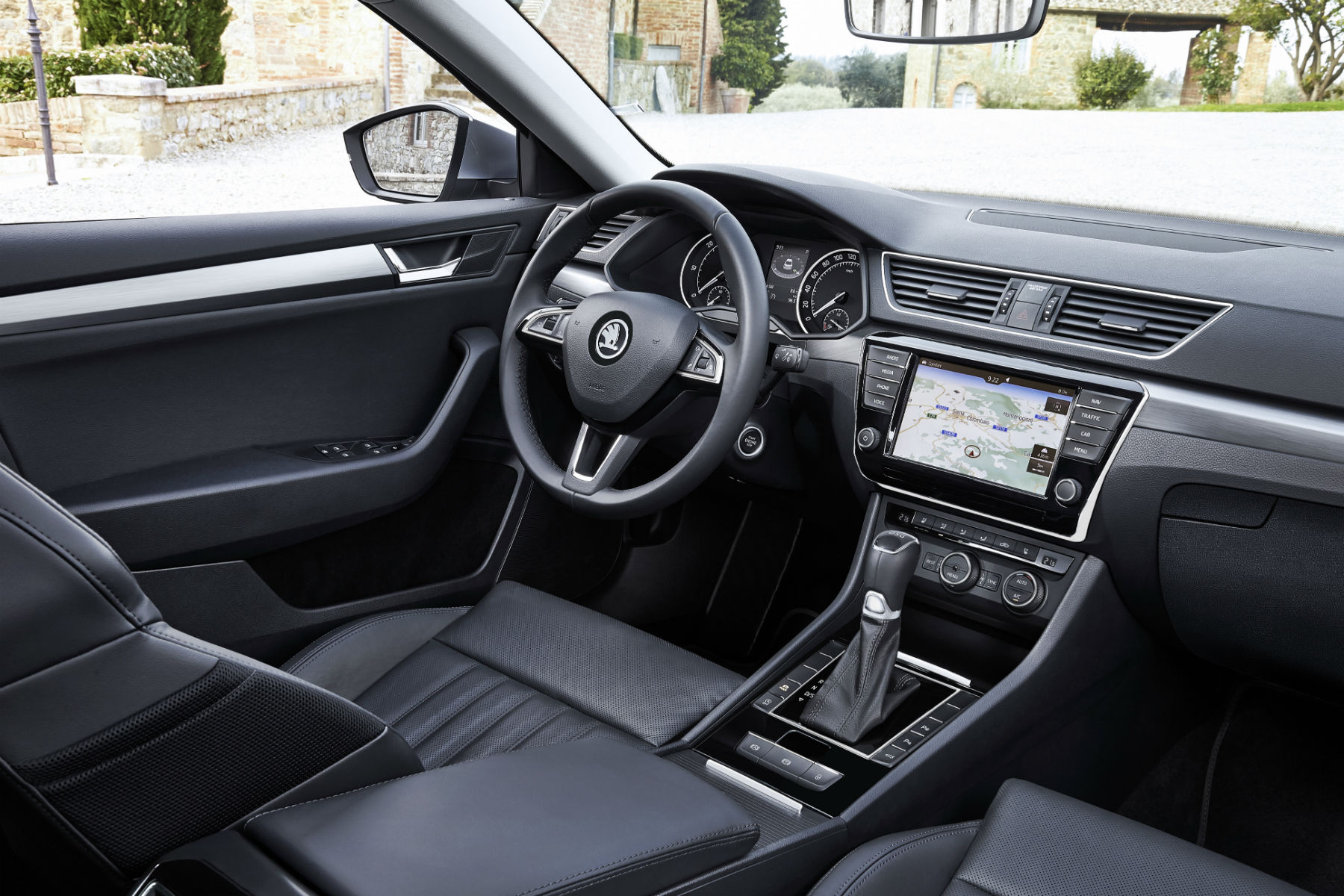 Sharply styled and packed with premium equipment, the new Superb could banish Skoda’s ‘budget brand’ image for good.
Sharply styled and packed with premium equipment, the new Superb could banish Skoda’s ‘budget brand’ image for good.
Tim Pitt | April 2015
Skodas used to be joke – literally. But the Czech carmaker’s reinvention under Volkswagen is a modern success story.
The first Superb of 2001 stretched the VW Passat platform to create a cut-price limo that, in turn, stretched perceptions of Skoda. It offered the space to rival a luxury saloon, at a decidedly mid-market price.
This third-generation Superb sticks to the lots-of-car-for-your-cash formula. It’s based on the same MQB platform as the latest Passat and is longer, wider and taller than before, with a roomier cabin and even bigger boot.
“That’s all very well,” I hear you retort, “but if all I wanted was lots of space I’d buy a people carrier.” So the Superb needs to cut it on the road and – crucially – in the executive car park. Let’s start with the ‘road’ part…
What is the 2015 Skoda Superb like to drive?

The Superb comes with a choice of turbocharged, four-cylinder engines: three TSI petrol and four TDI diesel. The petrols produce between 125 and 280hp, while diesels range from 120 to 190hp.
In addition, you can have a six-speed manual gearbox or pay £1,400 extra for a DSG semi-automatic. There’s also the option of four-wheel drive if you go for the 2.0 TDI.
Skoda reckons 93% of Superbs will have a diesel engine, so that seemed like a sensible place to begin. We picked the 150hp 2.0 TDI, which is likely to be the bestseller. And looking at the figures, it’s not hard to see why.
Despite, its 30hp advantage over the entry-level 1.6 TDI, the 2.0-litre lump posts exactly the same fuel economy and CO2 emissions figures: 68.9mpg and 108g/km. Pick the DSG ’box, as fitted to our test car, and that drops to 62.8mpg and 118g/km. Nonetheless, those are still strong stats for such a large car.
The low-down grunt of this engine suits the Superb well and there’s plenty of oomph for overtaking. It is rather vocal, though, and the DSG gearbox feels slightly slow-witted and reluctant to change down.
We also tried the 150hp 1.4 petrol, which features cylinder deactivation – effectively working as a two-cylinder engine where possible. It needs to be worked harder than the diesel, but its smooth, free-revving character means that’s no chore.
Around town, the switch between two and four cylinders is imperceptible, and 57.7mpg economy (115g/km CO2) isn’t far off the 2.0 TDl either. This clever petrol engine is a real alternative to diesel; shame so few Superb buyers will choose it.
The reason diesel engines are so dominant is that around 70% of Superbs will go to fleet buyers. And it’s the day-to-day grind of motorway work where this car feels in its element. It’s stable, quiet and very comfortable – perfect if your second home is the outside lane of the M6.
At lower speeds, the Superb’s ride is less convincing. It thuds over road humps and feels jittery on broken tarmac. We’d like to say the payoff is pin-sharp handling, but sadly that’s not the case. The Superb doesn’t ‘shrink’ around you like a good sports saloon and it won’t entertain like a BMW 3 Series, or even a Ford Mondeo.
Both our high-spec SE L Executive test cars had Drive Mode Select, which allows you to adjust steering, suspension and gearbox settings via the touchscreen. However, we found the steering too vague in Comfort and the ride too firm in Sport. Normal mode seemed the best compromise.
Just how more spacious is the new Skoda Superb?

What the Superb lacks in dynamic finesse, it makes up for in space and equipment. There’s enough headroom for a quintet of basketball players and rear legroom rivals an executive jet.
Boot space has swelled to a cavernous 625 litres, or 1,760 litres with the rear seats folded. For comparison, a Ford Mondeo holds 541 or 1,437 litres. An estate version of the Superb arrives in 2016 but, frankly, it’s hard to see why you’d need it…
The Skoda’s straight-edged dashboard is plain but functional, and the quality of the plastics falls short of a Passat. No doubt that’s a deliberate move – Volkswagen Group has to differentiate its products somehow.
On the plus side, the media system is straightforward to use (our test cars had the higher-spec Columbus system, with 8in touchscreen) and the wide seats offer plenty of adjustment.
The Skoda is brim-full with thoughtful touches, too. The front cupholder has a grippy base that allows you to open bottles with one hand. There’s a removable torch in the boot. And there are pop-out umbrellas in both front doors, just like a Rolls-Royce.
One feature that has been abandoned is the old ‘Twindoor’ boot, which could be opened like a saloon or hatchback. Now the Superb is strictly a hatch, but if you have a low-ceilinged garage, you can set the tailgate so that it won’t open above a certain height.
Standard kit on all Superbs includes air-con, Bluetooth phone connectivity, DAB radio and automatic emergency braking. Upgrade from S to SE and you’ll get rear parking sensors and cruise control, while SE L Executive adds sat nav, xenon headlights and leather upholstery.
There’s also the Laurin and Klement flagship, with three-zone climate control and in-car TV, plus a value-packed SE Business trim (including sat nav) for fleet buyers.
Verdict: Skoda Superb (2015)
Prices for the Superb start at £18,640, and the mid-range 2.0 TDI manual in SE-spec costs £22,090. That’s around £4,000 cheaper than a VW Passat with the same engine, and over £6,000 less than a BMW 318d SE.
Consider that the Skoda is much bigger than both those cars and it’s hard to argue against in terms of value. Skoda may no longer be a ‘budget brand’ when it comes to quality, but it hasn’t forgotten about low prices.
The Superb won’t make you smile from behind the wheel; it’s a car you admire rather than fall in love with. But what Skoda has created is a thoroughly competent luxury car.
Handsome, spacious, comfortable and practical, it’s a fitting flagship.
Rivals: Skoda Superb (2015)
- Volkswagen Passat
- Ford Mondeo
- BMW 3 Series
- Mercedes C-class
- Lexus IS
Volkswagen and Ford represent the mainstream marques here, while BMW, Mercedes and Lexus are well-established premium brands. The Passat is perhaps the most capable all-rounder, although the Mondeo isn’t far off. The BMW is the driver’s choice, the Mercedes has the best interior and the hybrid Lexus is great for urban driving. You pays your money…
Specification: Skoda Superb 2.0 TDI 150 (2015)
Engine: 2.0-litre turbodiesel four-cylinder
Gearbox: six-speed manual, front-wheel drive
Price: from £22,090 (SE L Executive DSG as tested: £26,520)
Power: 150hp
Torque: 251lb ft (340nm)
0-62mph: 8.9 seconds
Top speed: 135mph
Fuel economy: 68.9mpg
CO2 emissions: 108g/km